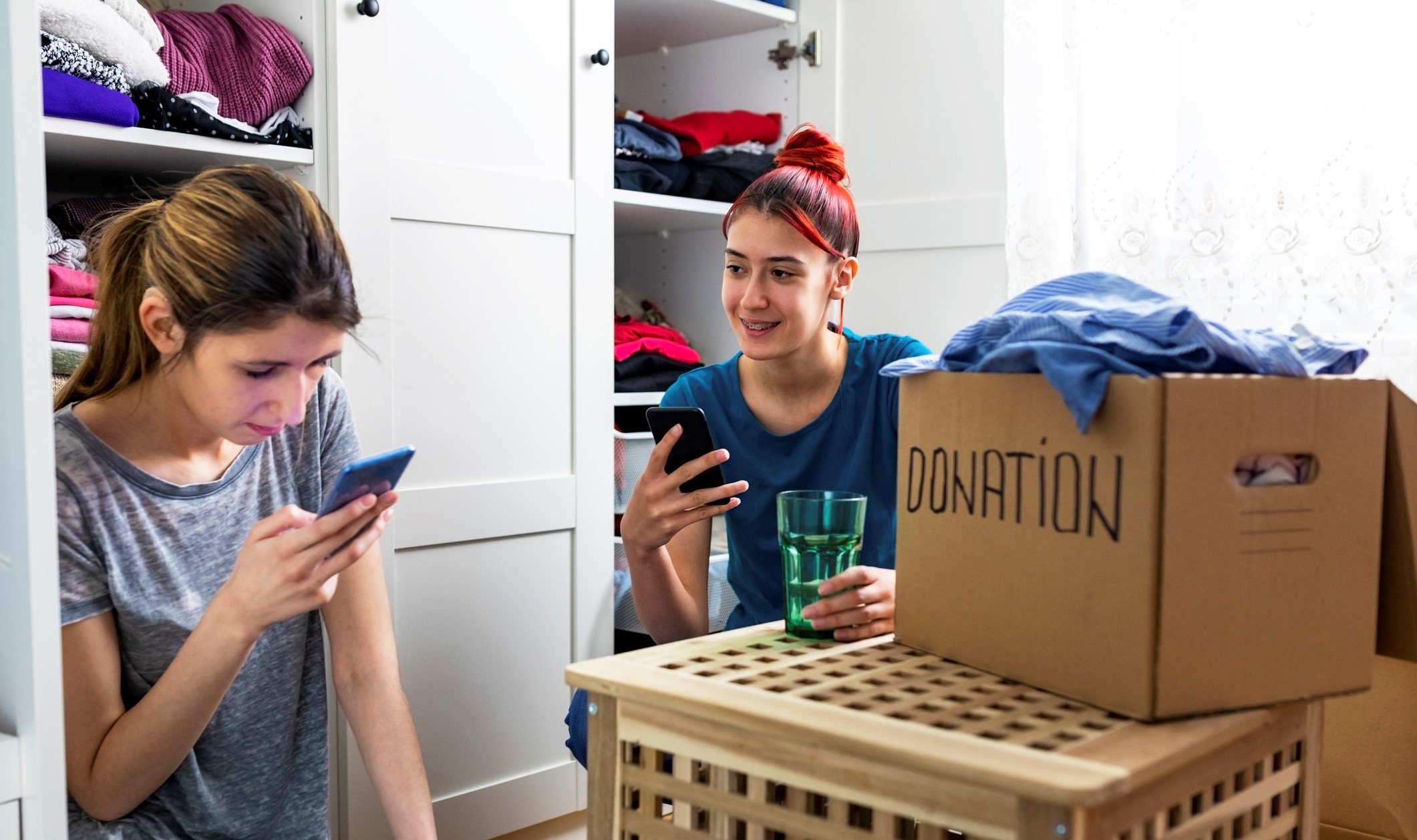What have you done with last season's clothes? Waste researchers like QUT's Associate Professor Alice Payne want Australians to put a lot more thought into that question and have taken their case to Canberra and the world.
Associate Professor Payne was a guest speaker at last week's inaugural global Sustainability Research and Innovation Congress (SRI2021), and also represented QUT at a National Clothing and Textile Waste Roundtable and exhibition in Canberra late last month.
Associate Professor Payne, from QUT's Centre for a Waste Free World, said the congress was the first gathering of its kind to look at sustainability across a range of industries, including textiles.
It was hosted by Brisbane and attracted nearly 2000 people (virtually and in-person) from 100 countries to hear expert speakers from countries including the United States, France, South Africa, India, New Zealand and Australia. QUT was a hosting consortium partner.
Researchers from UTS, USC and QUT were part of a session that discussed the entire life cycle of fashion textiles, including networks of circular fashion production, repair culture in Ghana, new models of sustainable consumption, and the role biotechnology and robotics advancements can play in supporting sustainable development goals.
"The world sends an estimated 92 million tonnes of textile waste to landfill every year and it's on the increase," Associate Professor Payne said.
"The great opportunity here is in public education – showing how everyone can play a role in the transition to a circular economy. This is why we are embracing dialogues with government, industry and the community."
"In addition to encouraging consumers to do the right thing and reduce the amount of 'fast fashion' they buy, we also need to provide opportunities to recycle textiles and create new products from them and create a more circular fashion economy."
Last month's National Clothing and Textile Waste Roundtable in Canberra with Environment Minister Sussan Ley was accompanied by an exhibition at Parliament House that showcased industry and research innovation for recycling clothing textiles, including QUT projects.

Associate Professor Payne said the roundtable had produced several positive outcomes.
"Minister Ley signalled that clothing textiles will be added to the National Product Stewardship Investment Fund, which provides Australian Government grants as incentive to develop waste solutions for products such as coffee capsules, food packaging, mattresses and e-waste," she said.
"Adding clothing textiles to that potential funding list will be an incentive for researchers and start-ups to work even harder to come up with viable new solutions."
The Australian Government has also announced a seed funding round of $1 million for clothing textiles as part of it being added to the National Product Stewardship Investment Fund's list of priority areas.
The roundtable also proposed holding a national summit later this year to develop a set of product stewardship goals for a circular economy for clothing textiles. The summit will focus on collaboration and action by industry and governments.
QUT textile waste researchers are also another step closer to seeing some of their innovative research put to work in the real world.
In 2018, they began working with clean technology company BlockTexx to create a process that separates the cotton and polyester commonly found in many items of clothing.
Blocktexx has now announced that the company has secured $5.5 million in funding to build and commission its world-first, commercial-scale, resource recovery facility using the proprietary process.
Australians discard close to 800,000 tonnes of clothing and textiles each year, a rate of 15 tonnes every 10 minutes, and only around seven per cent is recycled.
Most goes to landfill, where it can take hundreds of years to break down, releasing harmful carbon emissions along the way.

Ways to reduce/recycle your clothes:
- Before buying new, think about what works in your current wardrobe and why you love it – this can help you make better future purchase decisions
- Launder with love – caring for our clothes increases their longevity
- Repair and remodel – use an alterations service or repair your own clothes to keep them lasting longer
- Quality not quantity, invest in quality pieces that will last and are timeless
- Consider one-off rentals for special occasions, rather than buy new
- Swap clothes with friends or try sharing/buying communities such as Populace Threads
- rehome children's clothes with family and friends
- sell unwanted quality clothes via online sites (eBay, Gumtree, Marketplace, Depop)
- donate good quality clothing to op shops and charities
- use worn-out clothing as cleaning rags, rather than buying cloths
- give away clothes to people in need via online sites/groups
- support charity drives such as Share the Dignity (handbags)
- other textiles like blankets and sheets can be donated to animal shelters and winter blanket charity drives






